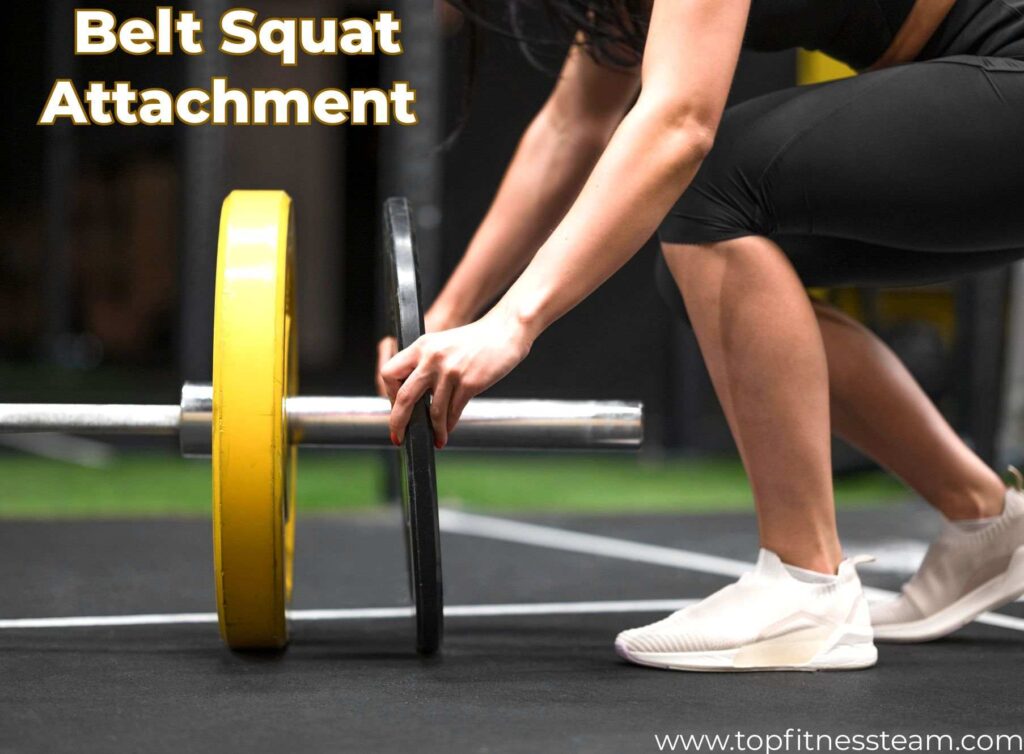Hello everyone, Top Fitness Team is here. This article will tell you about Belt Squat Attachment.
Introduction
Squatting, often heralded as the king of exercises, presents various incarnations. Each variant, from the traditional barbell to the goblet squat, offers unique advantages.
Enter the belt squat attachment, an innovative option that provides an effective leg workout without undue strain on the upper body.
What is Belt Squat Attachment?
A belt squat attachment enables weighted squats using a belt rather than a barbell. It shifts the weight from the upper body, typically across the shoulders, to the hips.
It highlights the legs and avoids compression on the spine, a regular concern with squats.
Advantages of Using Belt Squat Attachment
The numerous benefits of the belt squat attachment make it a must-have in any fitness lover’s arsenal:
- Safety and injury prevention: It significantly reduces spinal reduction, making it an ideal choice for those with back or shoulder problems.
- Targeted muscle activation: The focus remains on the leg muscles, giving them an intense workout without overloading the upper body.
- Versatility in training: Whether rehab, hypertrophy, or strength training, this attachment fits all bills.
- Less equipment and space needed: A boon for home gym lovers, it only occupies a tiny space and negates the need for heavy barbells.
How to Set Up and Use Belt Squat Attachment
Selecting the proper attachment and setting it up correctly is crucial. The Revolt Belt Squat attachments reviewed by Men’s Health are an excellent option.
Once chosen, provide the belt that fits snugly around the hips, then gradually add weight, focusing on proper form throughout.
Step-by-Step Guide How to Use
The belt squat attachment offers a unique approach to strength training, highlighting leg muscles without upper body strain. Here’s a quick step-by-step guide to get started with Belt Squat.
- Select the appropriate belt size.
- Attach weights securely.
- Position belt around hips.
- Stand on elevated platforms.
- Maintain shoulder-width stance.
- Execute squat and maintain form.
Common Mistakes & How to Avoid Them
Mistakes are often the stepping stones to mastery. Avoid these common pitfalls for an effective workout:
- Incorrect belt placement can lead to undue strain, provided it is around the hips.
- Maintain proper squat form to maximize benefits and prevent injuries.
- Avoid loading excessive weight initially. Start light and progress gradually.
- A good warm-up is non-negotiable. It preps the muscles for the workout.
Variations & Advanced Techniques
Once familiarized with the basics, why not shake things up? Incorporate paused belt squats for an added challenge, march in place to engage stabilizer muscles, or even add opposition bands to intensify the workout.
Maintenance & Care
Like all gym equipment, regular maintenance provides longevity. Clean it post-workout to prevent wear and tear, store it in a cool, dry place, and inspect regularly for any signs of damage.
Replacing worn-out parts or even the entire attachment might sometimes be necessary for optimal performance.
Pros & Cons
Pros
Cons
Summary
The belt squat attachment has carved a niche in the vast world of squats. It promises an intense leg workout while protecting the spine, combining the best of both worlds.
If you have used the belt squat attachment, share your experiences below! If you want to delve deeper into squats, why not check out the Arsenal Hack Squat Explained?
My Final Thoughts
Staying open to inventions like the belt squat attact in the ever-evolving fitness world can elevate our training sessions.
It is a simple yet effective tool, displaying the adage – simplicity often leads to greatness. Dive in, try it out, and let your legs talk.
FAQs
Q: How do you use a belt squat?
Ans: You use a belt squat by strapping a specialized belt around your hips, attaching weights to it, and then performing squats, providing the importance hangs vertically below.
Q: What is a belt squat attachment?
Ans: A belt squat is a device that allows you to perform squats using a belt secured around your hips, transferring the weight load to your hips instead of your spine.
Q: Is it better to squat with a belt or without?
Ans: Whether squatting with or without a belt is better depends on individual goals. A strap can provide additional support and stability, but training without it can support the core and stabilizers.
Q: Where do you put your feet on a squat belt?
Ans: When using a squat belt, position your feet shoulder-width apart or slightly wider, with toes pointing slightly outward, similar to the stance of a traditional squat.
Q: Are belt squats safe?
Ans: Belt squats are safe and often advised for those with back or shoulder issues, as they reduce spinal reduction compared to traditional squats.
Thanks.
